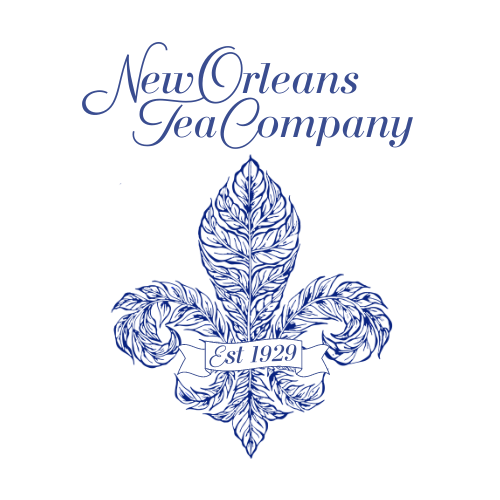
As one of the most popular drinks worldwide (second only to water), tea is consumed practically everywhere. Yet, despite its ubiquity, each culture has its own unique way of enjoying it. Read on to learn more about a few of the most unique tea traditions from around the world.
Atai (Morocco)
In Morocco, tea represents hospitality and friendship. Nothing illustrates this more than atai, a tea ceremony of sorts performed for guests which is usually led by the male head of the house. In fact, one of my favorite memories of my Marrakesh travels was sharing a cup of Moroccan tea with strangers as I shopped my way through the souks.
Traditionally, a Chinese gunpowder variety of green tea is brewed and is subsequently sweetened with sugar (LOTS of sugar) and flavored with fresh mint leaves. The tea is prepared in a samovar, a heated metal container traditionally used to heat and boil water, and is elaborately poured from high in the air into small glasses, often decorated with colorful designs.
Afternoon Tea (UK)
Most Brits would agree that they could not make it through the day without a good “cuppa.” Having smuggled tea out of China in the mid-1800s, (read the story of tea “spy” Robert Fortune – it’s fascinating!), and replicated the Chinese tea growing process in India shortly thereafter, the British have long been enchanted by tea.
Now celebrated worldwide, the British custom of afternoon tea consists of a selection of elegant sandwiches, scones served with clotted cream and preserves, cakes and pastries. Tea – often produced in India or Sri Lanka) is poured from silver tea pots into dainty bone china cups.

Chai Break (India)
Chai (which actually means “tea” in Hindi) is a cornerstone of Indian culture. In fact, the average citizen drinks approximately four cups a day to stay energized. And that’s just on average!
Masala chai is perhaps the most widely-consumed variety and is made by brewing black tea with a mélange of aromatic spices and herbs such as cinnamon, clove, ginger, cardamom and peppercorn, and mixing it with milk and sugar.
Across the subcontinent, vendors called chai wallahs serve masala chai to the public in small sustainable clay cups. (Fun fact: It’s totally okay to do as the locals do and smash them to the ground after finishing your tea!) Some consider the dust of these clay vessels to be an essential ingredient to creating the true flavor of this popular beverage.
Ataya (Senegal)
The beloved tea ceremony known as ataya is an integral component of Senegalese life. It can take place at any time there’s an opportunity for family friends to gather and chat but is typically served after meals.
The ceremony unfolds over the course of three stages, during which a fresh pot of water and tea leaves is boiled over a stove. Like the Moroccan tea tradition, a strong and bitter brew of Chinese green tea is made and then poured into small glasses named kas until a thick foam is formed on top.
Each stage of pouring is the same, but the first cup is usually bitter, while fresh mint and sugar are added as the stages proceed. Senegalese folklore says the first cup is representative of the love of your mother, the second the love of your friends and the third (the sweetest) is the love of your romantic partner. Watch the ceremony here.
Gong Fu (China)
As the traditional Chinese method of serving tea, gongfu is an incredibly detailed process with a number of steps – including warming the cups, waking up the leaves, smelling the leaves – that are repeated until all guests have had their fill of tea.
The ritual also involves a number of brewing tools including a “fair cup,” strainer, tongs, a brewing tray, small drinking cups and "scent cups" which allow the guest to enjoy the aroma of the tea.
Although the gongfu process is elaborate, I find it to be more casual than the Japanese ceremony, with less room for error. Because it uses more leaf and less water than Western style brewing, gongfu brewing brings out all the unique complexities and nuances of the tea, making the experience far more enjoyable.

Way of Tea (Japan)
Chado (“the way of tea”) is the Japanese method of preparing and serving tea and is perhaps the most ritualistic tea ceremony in existence. It is generally held in a sparsely decorated room with a designated area in which tea is meticulously prepared and served to kneeling guests.
The ceremony is rooted in Zen Buddhism and serves as a spiritual practice in which participants are encouraged to remove themselves from the mundane world and truly exist in the moment. Matcha – ground tea leaves – and hot water are added to a chawan (tea bowl) and whisked by a tea master, who uses artful movements perfected over the past few centuries. The bowl of the tea is then presented to guests, often with a sweet treat called wagashi.
Zavarka (Russia)
Visit someone’s home in Russia and you’ll immediately be offered one (or both) of their two favorite beverages: vodka and tea.
It is their love of tea that was established around the time of the Bolsheviks’ victory in the Civil War, when soldiers and factory workers began receiving free tea, a luxury that had previously been reserved for the aristocrats.
These days, many Russians enjoy what’s called zavarka, a tea concentrate that’s brewed in a samovar and served over the course of several rounds. Each guest then dilutes their portion of the concentrate with water until the beverage reaches their desired strength. There’s no particular type of tea that's used for zavarka; fruit-based tisanes and herbal teas are both very common as is black tea.
If you find yourself in the country, don’t feel guilty for accepting your tea with a piece of cake, as it is considered bad manners for the host to serve the tea “naked.”
